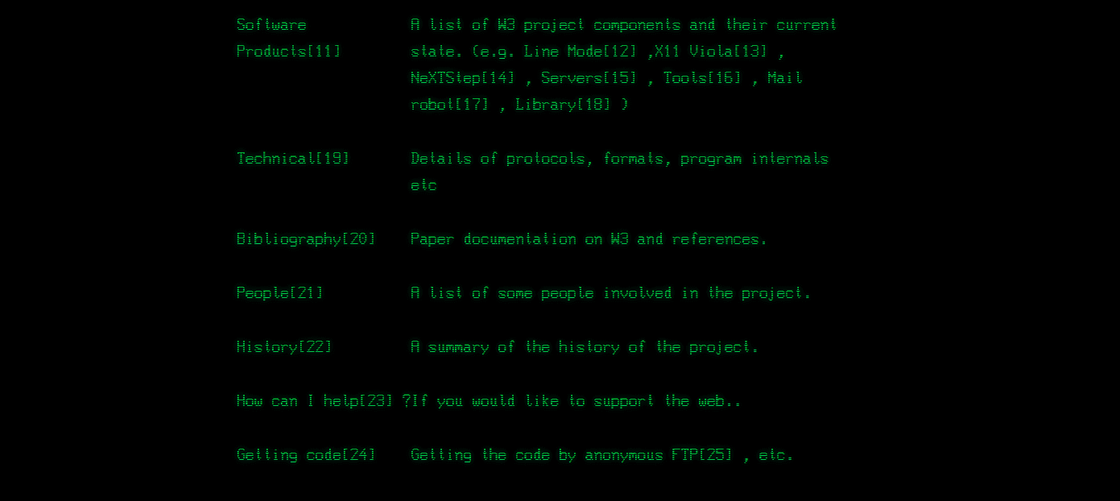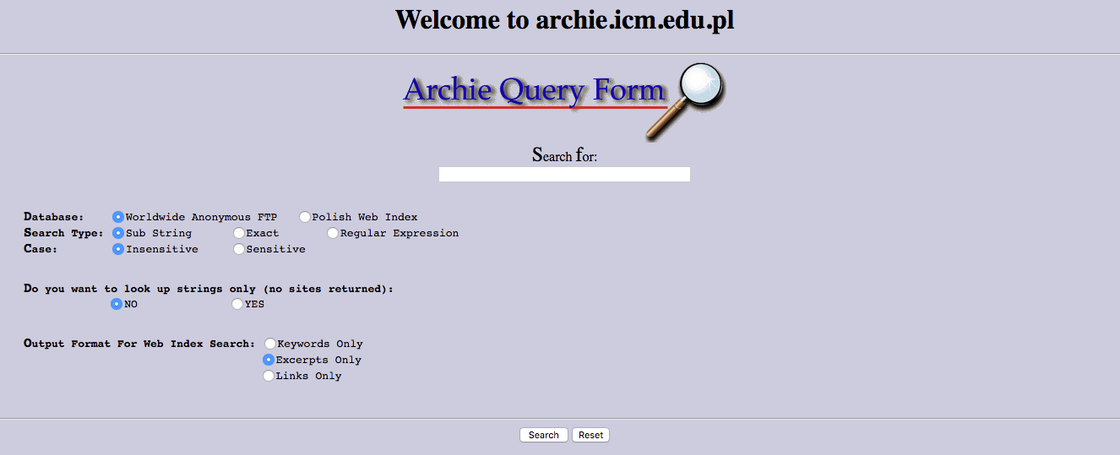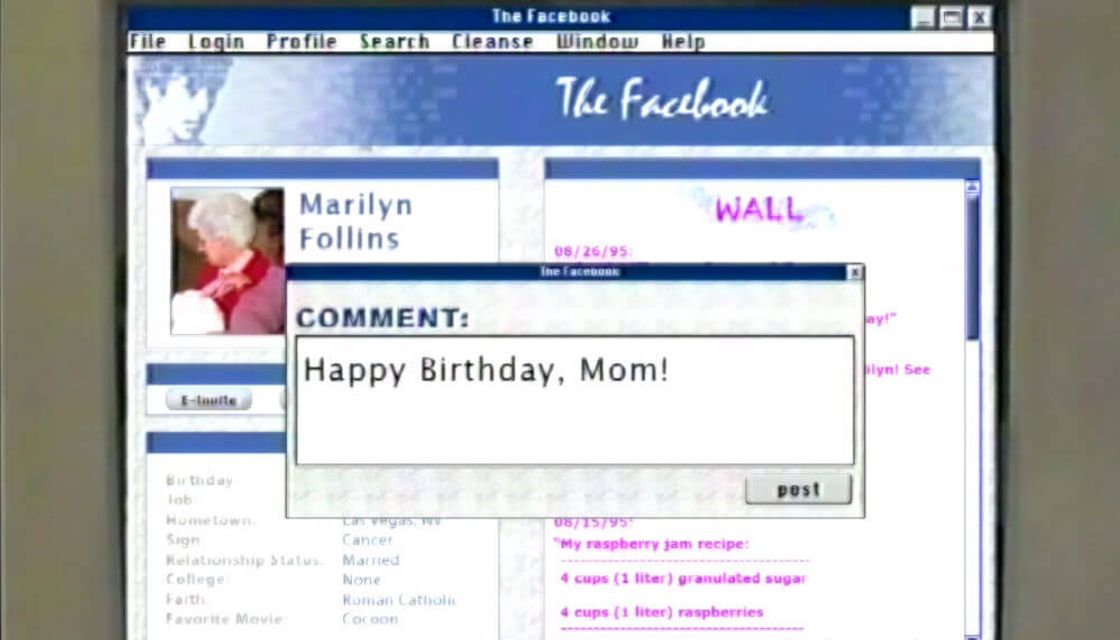How Sites Came to Be: A Brief History of the Internet

A brief history of the Internet will tell readers how the first sites appeared and the network community was transformed over the past few decades.
The Internet as we know it has changed a lot in recent years, as have its many websites. On the other hand, a network connecting multiple computers is a pretty old idea. Interestingly, such an idea appeared largely due to the American military and the Cold War.
In this article, you will learn a brief history of the Internet and the appearance of the first sites. Sit back – you are waiting for very interesting facts and figures!
How (or when) did the history of the Internet begin?
The first computer networks — military and civilian — preceded the first websites by decades. However, sites also need to pay a little attention – after all, it is thanks to them that we can freely communicate and receive information from all over the world.
Today's web pages (as well as the underlying protocols, markup and coding languages) make the data transmitted through the links take on an accessible form. Thanks to this, the information becomes understandable to the end user.
The first concept of the Internet was created for the needs of the US armed forces. Such a network was supposed to survive World War III and ensure uninterrupted communication between remote command centers and units.
But the most interesting thing was how this network was supposed to work. The creators sought to give digital networks the ability to communicate (independently). And that was long before websites were created! It is this network that is considered the great-grandfather of the Internet.
Back in 1969, ARPANET was created, an academic network that united universities. This was followed by the development of USENET, which connected the two academic centers, but had the first discussion groups. And this was an achievement – the network ceased to be "practical", turning into a platform for communication.
If you're wondering what came before – information sites or social networks, the answer is obvious.
How were the first websites in the world created?
Websites, or rather ideas for them, were blocked by decisions of the American National Science Foundation, which did not allow the use of the Internet for purely commercial purposes. According to officials of that era, the Internet was to be used only for educational, scientific and military purposes.
However, this little paradox did not prevent the development of the network in the Western world. The first sites were created not in America, but in CERN – the European Organization for Nuclear Research. In fact, this historic event took place in Switzerland.
And although today it can be said that this is not nuclear technology, communication with the help of computers seriously captured the minds of European scientists and strategists. The websites were created thanks to the WorldWideWeb (W3) project by Tim Berners-Lee and Robert Cayo.
As part of the project, they developed two similar specifications for hypertext Internet systems. The first site was launched in December 1990.
This was the result of a project called "The Project" To this day, you can find it at http://info.cern.ch/hypertext/WWW/TheProject.html.
The first browser to display web pages was created by Tim Berners-Lee. It was called WorldWideWeb, and the web pages displayed looked something like this:

Here you can see what the first websites looked like: in text form and without any graphic delights, with which websites look more stylish and modern.
The language in which websites are created is originally HTML, that is, the hypertext markup language, in English - HyperText Markup Language. In the initial version, on which the first websites were created, there were only 22 tags, and 14 of them have survived in HTML to this day.
The specification of the language in which the websites were to be created was publicly presented by Berners-Lee in January 1991.
These two events constitute a historical moment from which we can talk about the development of websites. Without this work, today's Internet would look very different.
At the initial stage of their development, websites did not resemble what we know today. A person just had to open the page and read the necessary information, and the user experience was – let's call it diplomatically – pretty dry.
That doesn't change the fact that websites worked and there was no shortage of people who wanted to create them and share their knowledge. It was the first digital window to the world in the centuries-old history of mankind.
The first Internet browsers in history
We mentioned the ban on the use of the Internet for commercial purposes, which was introduced at the initiative of the National Science Foundation of the United States. In 1991, this ban was lifted, allowing the Internet and websites to flourish.
The Erwise browser has become another milestone in the development of the Internet, radically changing the way content is displayed to users. It premiered in April 1992.
It was the first browser to allow you to view websites graphically. So all the tags were hidden and the sites looked much more user-friendly.
However, Erwise did not gain popularity, unlike the Mosaic browser, which appeared in version 0.5 in February 1993. It was appreciated by users and continued to be developed over the years.
Similar to Erwise, it displayed websites in graphical form, so the user could browse the sites without typing commands. It was enough to move the cursor and select links. Interestingly, based on the Mosaic code, everyone's favorite Internet Explorer was created.
But the real heyday of Internet browsers began only in the mid-1990s, when there were many products for every taste – for example, Netscape Navigator (1994) and opera popular among European users.
When did the first search engines appear on the Internet?
Almost from the very beginning, users needed a tool that would allow them to search on websites. Thus, the Internet and its users needed a search engine to go to the right sites.
On September 10, 1990, the Archie search engine was introduced. In fact, it was the first internet browser to allow users to search for websites by letter.

From time to time, Archie received data from dozens of his modern servers and presented search results based on them. As you can see, the user interface leaves much to be desired – but in 1990 no better was required!
However, the first full-fledged search engine that really won the hearts of users – not only because it performed well, but also because it produced good search results – was Yahoo.
Like most fast-growing dot-com sites, Yahoo offered not only a search engine, but also a host of additional features, including an information service, email, and more.
From 1995 to 2000, this search engine was the locomotive in the market.
The first sites for making money
The lifting of the ban on the use of the Internet for commercial purposes allowed American websites to earn money. On September 3, 1995, the famous eBay platform was launched. Since that time, financial transactions through websites have become the norm.
By the way, in 1982, the Boston Computer Exchange was launched, a well-known trading platform based on bulletin board systems (BBS) for the sale of used computers. It is one of the first, if not the world's first, e-commerce platform.
Over time, it turned out that commercial sites need some protection against fraud – this is how the SSL certificate was born, but this is a completely different story.
The list of service providers who use websites to attract customers and give them the opportunity to make purchases has grown exponentially every day. We see this trend to this day, observing the closure of physical stores with the rapid transition of business to the Internet.
CSS: A Key Twist in the History of the Web
In 1996, CSS was released, a programming language that allows you to display web pages in the browser. Thanks to this, the structure that characterizes websites has become even more clearly separated from their appearance (design).
In other words, the introduction of this language has revolutionized websites and, of course, their appearance. So, the next step to improving the user experience is done.
An equally important development in 1996 was the Nokia 9000, the first Internet-connected phone to view websites.
While this display couldn't represent a lot of content, it was an important milestone in development – after all, today we mostly browse websites on mobile devices. I wonder if anyone thought about this during the launch of the Nokia 9000?
Web pages change their appearance
In 1997 and 1998, two technologies appeared that once again revolutionized the display of website content and the development of the Internet in general.
The first is PHP, a scripting language that allows you to create even more beautiful websites. The second was Java, thanks to which it was possible to develop the first applications that run in the browser (that is, thanks to this technology, software as a service, or SaaS, appears).
Java itself appeared on websites around the year 2000, but was originally developed with the intention of applying it specifically to website development.
Internet archive where you can find non-existent sites
Few users know, but there is an archive of web pages where you can trace almost the entire history of the Internet.
In 1996, the non-governmental organization Internet Archive was established. The basic idea was to collect and provide access to outdated or non-existent versions of sites. After all, websites — even after disappearing from servers — can contain interesting information.

Internet Archive servers save Web pages to make it easier to restore access to their content. Since 2001, the Internet Archive has made stored websites publicly available. Contrary to visibility, not all versions of the site can be included in this archive.
The data is updated twice a month. But the number of websites is already slowly reaching two billion pieces (currently the counter shows about 1.89 billion websites), so there will be a lot of space on the Internet Archive servers.
A revolution in the history of search engines
The real breakthrough at one time was the launch of Google. It is the first search engine that focuses on showing the user the websites they are looking for, rather than advertising.
Google's concept was pretty simple — a project created by Stanford University students was supposed to be a search engine with a simple search box on the page. Unlike competitors, the company had to make money from advertising in search results, not on a page with a search engine.
Also, thanks to Google, for the first time in history, something like positioning and SEO (search engine optimization) appeared. Nowadays, in order to rise higher in the SERPs, we are forced to optimize content by hundreds of criteria, and companies hire expensive SEO specialists. It used to be simpler.
Yes, the race for SEO laurels began in 1998 and has been going on for over 20 years.
Dot-com bubble: the biggest crisis in the history of the Internet
On the U.S. Stock Exchange, brokers investing in internet companies once led to a crisis that was later called the Dot-com bubble.
In other words, investors were pouring money en masse so that companies, online, would replicate the success of Microsoft, for example. The result was the explosion of the Internet market on the stock exchange and its significant collapse in 2001-2002. Many online-only companies have had to wind down not only their businesses, but also their websites.
However, forward-looking companies like Google and Amazon continued to exist. For comparison, in 2001 there were (total) 17 million sites. If such a bubble were to emerge today, the consequences would be two orders of magnitude stronger.
Web 2.0 or websites for users
The concept of Web 2.0 turned out to be a real revolution in the creation of websites. This is not a technology, but a concept of the Internet that emerged at the turn of the twentieth and twenty-first centuries.
The idea was simple: put the Internet in the hands of users and give them the opportunity to interact with pages. That is, self-publish content.
It's not just about social media, where people can write something. It was about blogs, websites that allow you to share knowledge (for example, Wikipedia) and much more. Web 2.0 allows users to share information and interact with like-minded people and opponents around the world.
Until now, websites have provided information – they have been passively displayed in browsers, and the ability to interact has been limited. Thanks to the Web 2.0 revolution, the Internet and sites have become "bigger for the people." This was and remains a huge change.
Although the process dragged on for many years, and the emergence of websites allowing such interactions was technically complex, this trend dominated the Internet throughout the second half of the 2000s.
The concept of Web 2.0 had one consequence that is often forgotten: search engines began to rank pages based on the behavior and attitude of the users themselves, and links to sites gained enormous weight in its analysis.
Thus, the more often content is cited online, the higher its value. As you may know, this is also sometimes used against users and the search engine itself – link manipulation appeared around this time.
That doesn't change the fact that Web 2.0 has really revolutionized websites.
Growing popularity of social networking sites
In 2004, Facebook was launched, a year later - YouTube. Since then, websites have completely changed their face. The user experience, interface, and ease of use of the website have started to be of paramount importance to the online community.
Social media sites quickly took a dominant position in the market, and now occupy the first places in the rankings of the most popular sites on the Internet.

The top three places, according to SimilarWeb, are currently occupied by Google.com, Facebook.com and Youtube.com. Interestingly, users spend an average of more than 21 minutes on YouTube video hosting.
Wikipedia is in 9th place, and Baidu – the Chinese search engine for sites (Google is blocked in China) – is in 4th place in popularity.
These proportions clearly show that websites that allow any interaction are much higher than the rest. Although Yahoo.com – as an information service and a supplier of additional products – occupies a strong 5th place in the ranking.
The Present: How We Write the History of the Internet
In recent years, mobile devices have accounted for the majority of Internet traffic. So, 21 years after the premiere of the first internet phone, we can finally say that websites are becoming mobile-friendly.
New trends in web design suggest that websites need to be fully responsive, i.e. mobile friendly. Another trend has emerged: security. This means that all sites must have an SSL certificate.
Most of these changes are the result of Google's strong position in the market – this company dictates the terms and largely sets trends when it comes to the operation of sites.
That doesn't change the fact that websites have brought something extraordinary to the world: equality. They improved access to knowledge, simplified learning, made it possible to make friends and share knowledge. Today, you don't have to be a professor, journalist, writer, or filmmaker to open yourself up to the world.
This is the path that sites have traveled from their first CERN project to today.
According to statistics, the largest growth of websites occurred between 1992 and 1993 (1200%). But the largest quantitative jump was recorded in 2016, when their number doubled – these are the data from Internet Live Stats.
Today we are talking about almost two billion sites of different subjects and orientations. I wonder if this is what Tim Berners-Lee expected when he launched his first website?
Previous Article
Microsite or landing page: advantages and disadvantagesNext Article
Common Reasons for Falling Traffic from Google